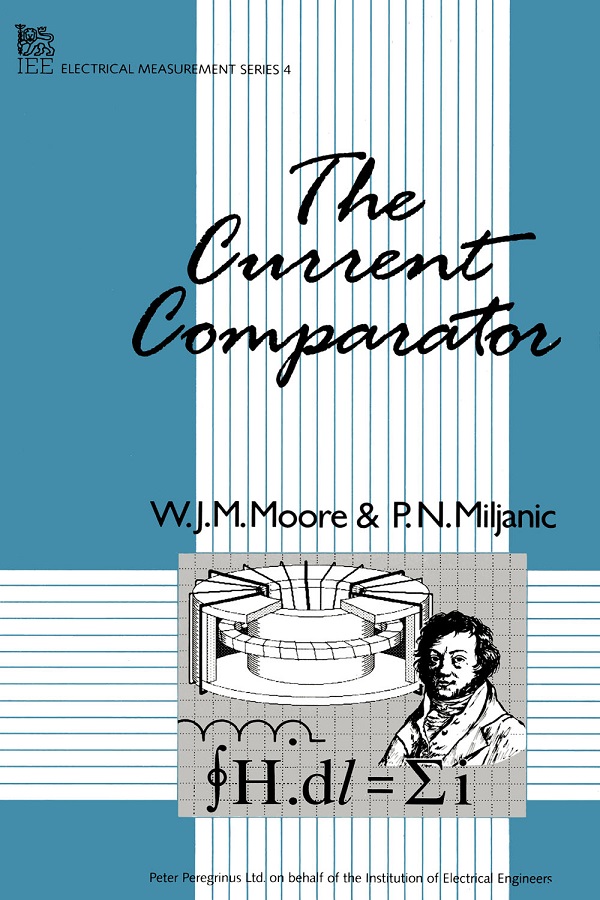- Agricultural Engineering and Technology
- Applied Physics
- Built Environment
- Computing and Networks
- Control, Robotics and Sensors
- Electrical Regulations
- Electromagnetics and Radar
- Energy Engineering
- Healthcare Technologies
- History and Management of Technology
- IET Codes and Guidance
- Manufacturing
- Materials, Circuits and Devices
- Model Forms
- Security
- Telecommunications
- Transportation

The Current Comparator
by W.J.M. Moore, P.N. Miljanic
In 1961, Moore and Miljanic in collaboration with N. L Kusters developed the current comparator, for which a patent was granted in 1964. Since that time they and their associates have applied this technique toward advancing the art of electrical measurement.
The current comparator comprises a special configuration of concentric toroidal magnetic cores and windings which enable the physical realisation of a very precise ampere-turns ratio standard. It provides the basis for the precise measurement of various electrical quantities at both direct and alternating currents using current ratio techniques. Applications include the calibration of instrument transformers, measurement of the losses of high voltage capacitors and inductive reactors, measurement of the short circuit losses of large power transformers, the calibration of power and energy meters, an alternating current impedance bridge, direct current resistance measurements, the calibration of high direct current metering systems and shunts, a seven decade direct current potentiometer, and a 20 bit digital-to-analogue converter.
The book presents the basic theory of the current comparator, methods of construction leading to high ratio accuracies, and the operating principles of the various applications.
About the Author
W.J M. Moore is a principal research officer in the Division of Electrical Engineering of the National Research Council, Ottawa, Canada. He has been working on precision measurements since 1958, and is a Fellow of the Institute of Electrical and Electronics Engineers. In 1987 he received the Institute's Morris E. Leeds Award for his achievements in the field of electrical measurement.
P.N. Miljanic is a full member of the Serbian Academy of Science, Professor of Electrical Engineering and Power Electronics at the University of Belgrade and Scientific Advisor to the Institut Nikola Tesla and the Institut Mihailo Pupin in Belgrade, Yugoslavia. He has also been, on several occasions since 1960, a visiting scientific officer at the National Research Council of Canada.
Publication Year: 1988
Pages: 132
ISBN-13: 978-0-86341-112-0
Format: HBK
